Technical specifications as listed by Aqua Computer:
“Dimensions: 400 x 140 x 40 mm
Connection threads: G 1/4
Threaded inserts: M3
Connection terminal material: Delrin
Tube material: Copper
Fin material: Copper
Frame material: Stainless steel”
Dimensions Measured on the radiator tested (retail unit):
Note that unlike the AMS radiator which looks similar, the Radical2 is not quite as wide as the AMS which is 146mm. It’s also slimmer at only 40mm vs the AMS’s beefy 64mm.
Radiator Core Dimensions:
The Radical 2 has a finned tube core construction, not the flat tube and corrugated fin type most commonly seen in PC water-cooling rads.
The finned tube core is based around 14 copper tubes which have 180° bends at the return end. (non port end). This means that it is not the traditional U-Flow type radiator with a return end tank. Instead the Radical 2 has a front to back flow path (or back to front depending on installation orientation). To help understand this Flow Path I’ll re-use the next two pics from another write-up.
The first shows a typical U-Flow coolant flow path, where the coolant travels up all the tubes on one side (left in pic) of the radiator and then returns down the other side. U-Flow is most easily recognized when the port end has 2 separate tanks.
While this next pic attempts to demonstrate a front to back flow path, where coolant travels up one “face” of the core, (rather than a side as on the U-Flow) then returns down the other “face” to the outlet port.
To achieve the flow pattern, the Delrin Port end “terminal” of the Radical 2 has been machined so that the inlet port (as depicted by the arrow) feeds the 7 tubes in parallel on the NON-PORT “face” of the rad…therefore the outlet port is connected to the PORT “face” tubes of the rad.
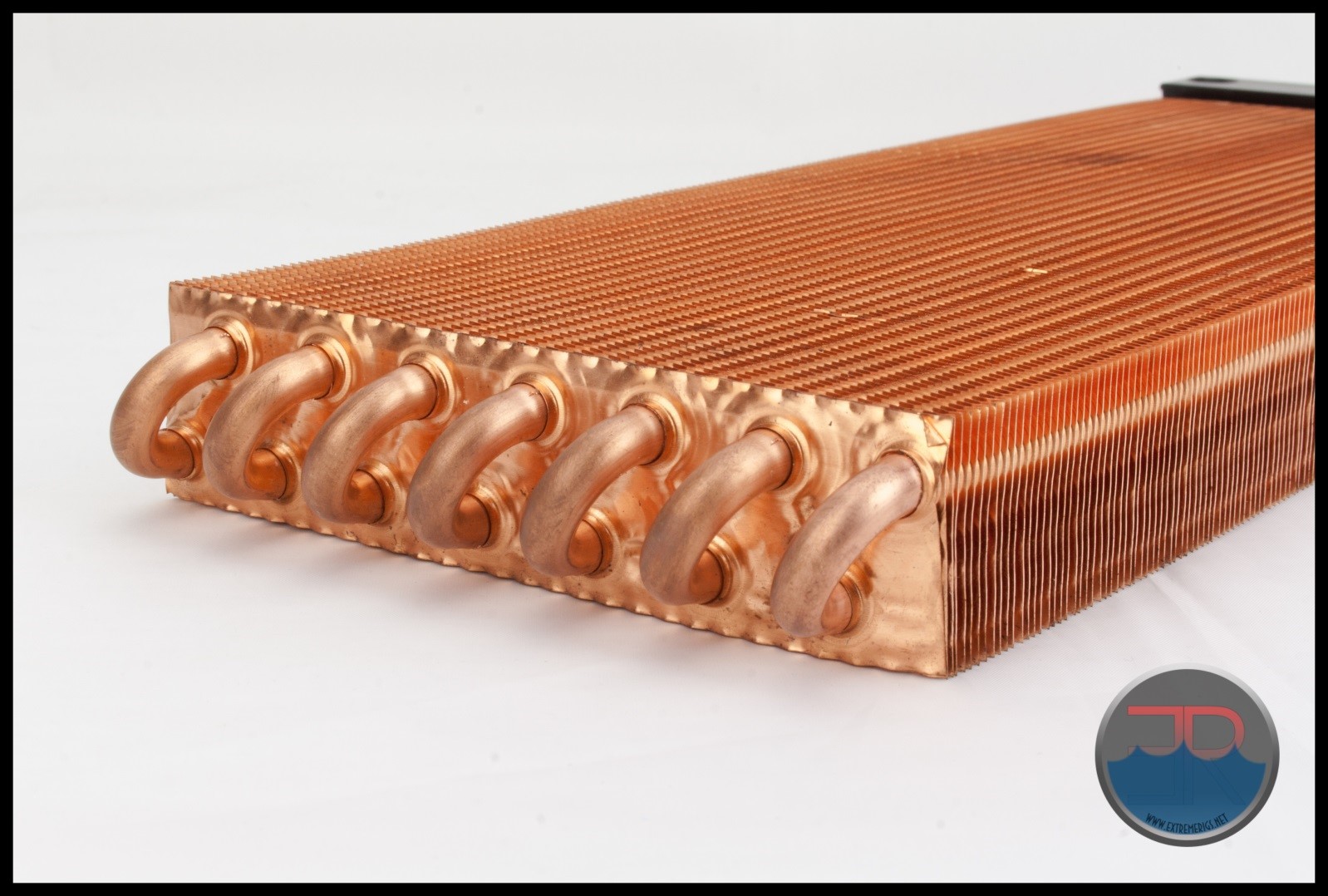 I tried to remove the port end piece to get a picture of the machining inside, but I was unable to remove it from the copper tubes.
I tried to remove the port end piece to get a picture of the machining inside, but I was unable to remove it from the copper tubes.
There has been discussion on which “face” should be the hot side (warm coolant) on the NON U-Flow radiators and which side (face) should be receiving the fresh intake air. This is the first radiator in the group which I have tested flow direction both ways for a comparison.
In the default test chamber setup airflow comes through the radiator from the non-port side and exhausts out the port side.
Going on advice (from HardwareLabs about their Nemesis GTX rads) the port side tubes should be the hot side (with this air flow direction) acting as a pre-cooler of sorts for the non-port side which receives the cool fresh air. I decided to name this flow direction OptiFlow. The reverse flow direction I (rather boringly) named Reverse Flow.
At this stage I thought that it was unusual that Aqua Computer have chosen to place inlet/outlet direction arrows on the ports, with no info or reasoning as to why. I assumed that the coolant flow path (OptiFlow or Reverse) would make a difference in performance and the required port for coolant inlet would be different depending on the installation orientation and air flow direction – think vertical front mount Vs. horizontal roof mount. We’ll see how much difference, if any OptiFlow Vs. Reverse Flow makes later when we look at the data.
My averaged fin count was 13 FPI (Fins Per Inch) and the pic shows just how evenly the fins are spaced on the tubes – beautiful!
Finish and Features
The Radical 2’s raw copper tubes and fins and the first stunning feature that you just can’t help but notice. It is simply a thing of beauty that might be best used in a Push only installation where the core can be shown off.
The next thing that you’ll notice is the stainless steel side panels and return end cover which has a black nickel finish. These are great looking design features that gives another classy element to the Radical 2. Unfortunately (in my opinion) Aqua Computer have ruined the stylish high end feel and look of the stainless steel side panels by laser engraving the somewhat busy logo down each side.
In the picture above you may notice no threads for fixing fans to the rad, or indeed for fixing to the chassis. The fixing “system” uses square threaded nut inserts rather than threads tapped into the frame as normally found on our PC water-cooling rads.
Aqua Computer claim the following:
“For an improved and easier installation process, the Airplex radical series comes with threaded inserts made from nickel plated brass that protrude into the mounting holes of the fans. Therefore, fans are “automatically” correctly aligned to the threads – extremely convenient especially with large radiators! Additionally, this results in a deeper thread and the screw can be positioned farther away from the tubes and fins of the radiator, reducing the risk to damage the radiator by using too long screws. If the radiator is to be installed without fans, the inserts can also be installed upside-down resulting in a nearly flat surface, so there is no gap between radiator and PC case.
Both sides of the radiator are equipped with slide rails for the threaded inserts and inserts for one side of the radiator are included in delivery.”
That’s certainly good marketing – however in truth, there is only really one advantage of this mounting system – in the event of a stripped thread the nut can be replaced with one from the expensive replacements offered by Aqua Computer.
While this option to be able to change the nuts may prove useful – I found this mounting system so frustrating that I dreaded going anywhere near the radiator and having to mount / unmount it with fans. The threaded inserts constantly fall out of the square slots that they go into on the rails and that is on a flat surface on a bench top.
I can’t imagine having to install fans to this radiator in-situ; it would be enough to test anyone’s patience and frustration level I am sure. I wanted to glue the inserts into place but needed some wriggle room when going to mount the fans. This design is so very un-user friendly that I just cannot say enough how frustrated it made me.
The threaded nut appears to be a tight fit in the slot, and it actually is, yet when actually trying to fit the fans they often fall out.
As the thread sticks up into the fan hole, the provided screws are shorter than which are normally provided at just 25mm long, which is the thickness of a standard fan.
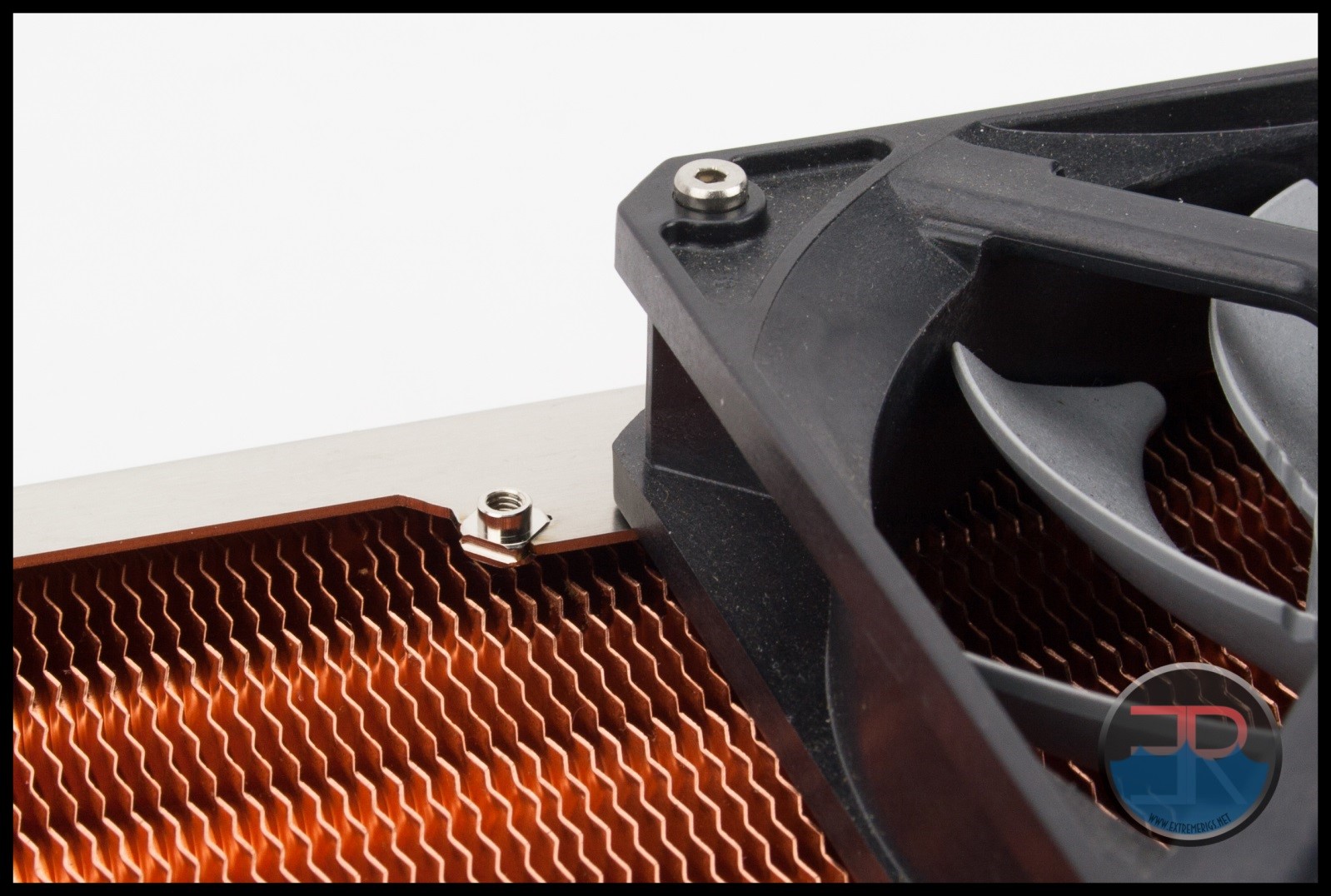 The Radical 2 comes equipped with just the 2 ports, inlet and outlet, so there are no opportunities for dedicated drain/fill ports. As mentioned previously the port end section is a single piece of delrin which really is an amazing piece of design work – and precision machining. The parallel septa-tube (7) flow path is again a design feature unique to the Radical 2. My concern with this design is whether or not the flow can remain turbulent or if will drop flow rate to be laminar and significantly reduce cooling performance. We’ll see in the performance results later.
The Radical 2 comes equipped with just the 2 ports, inlet and outlet, so there are no opportunities for dedicated drain/fill ports. As mentioned previously the port end section is a single piece of delrin which really is an amazing piece of design work – and precision machining. The parallel septa-tube (7) flow path is again a design feature unique to the Radical 2. My concern with this design is whether or not the flow can remain turbulent or if will drop flow rate to be laminar and significantly reduce cooling performance. We’ll see in the performance results later.
So we have a beautifully crafted radiator which certainly has some bling factor. Unfortunately due to the Radical 2 design we are missing the option of alternative ports and have the most frustrating mounting system I have ever had to use on anything.
Let’s see how it performs…







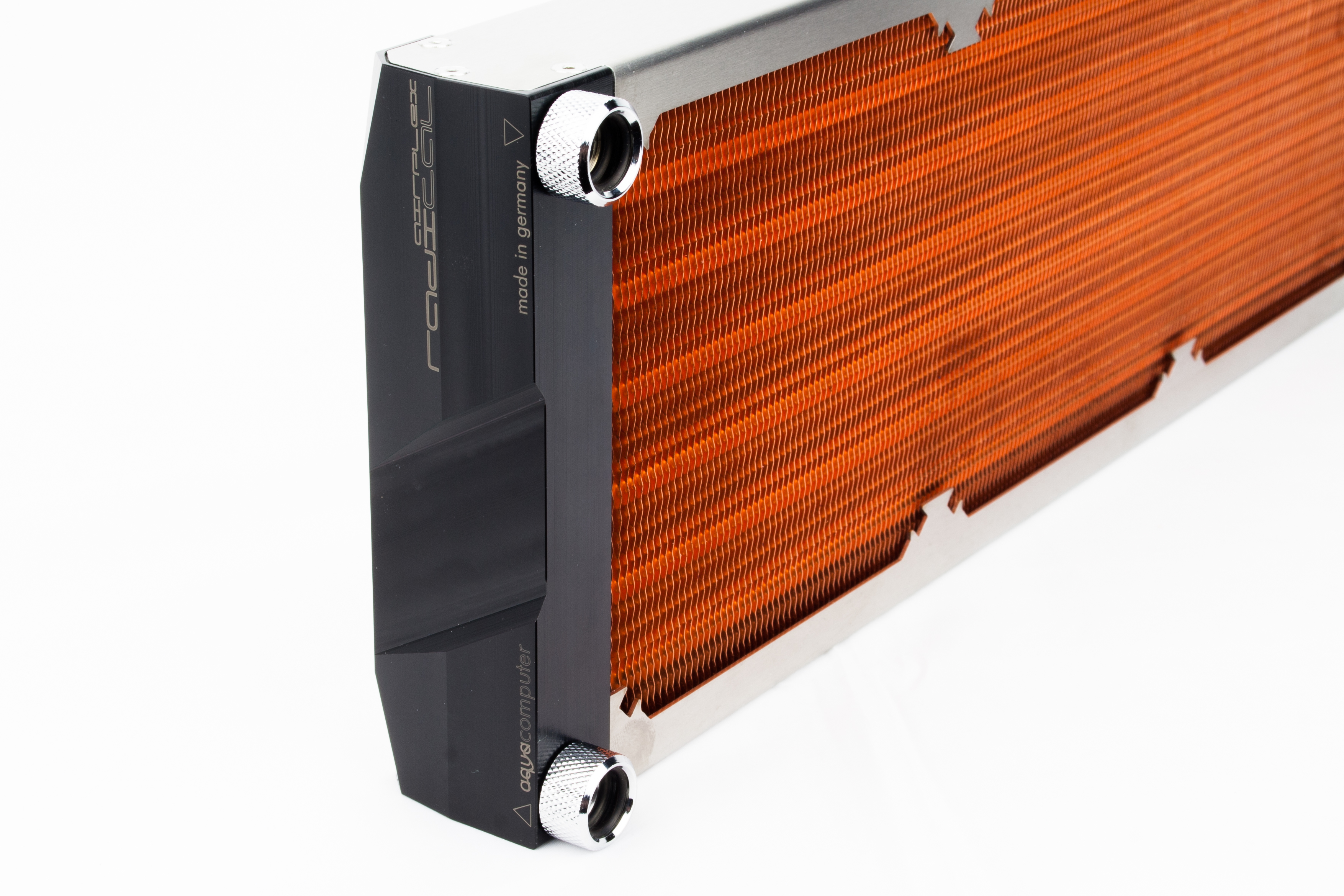


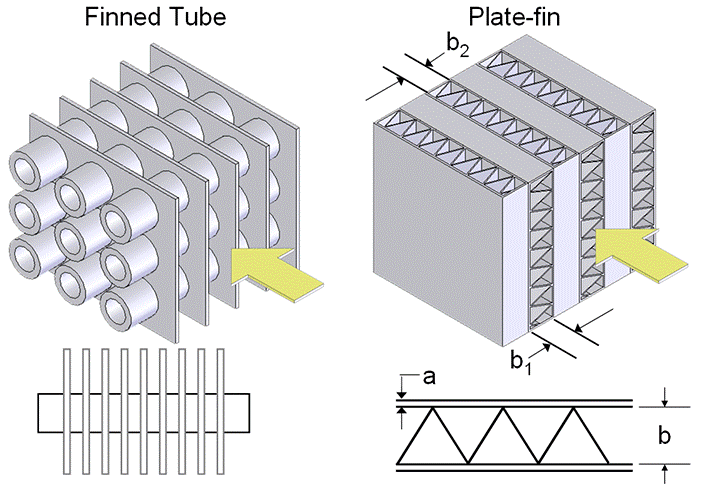
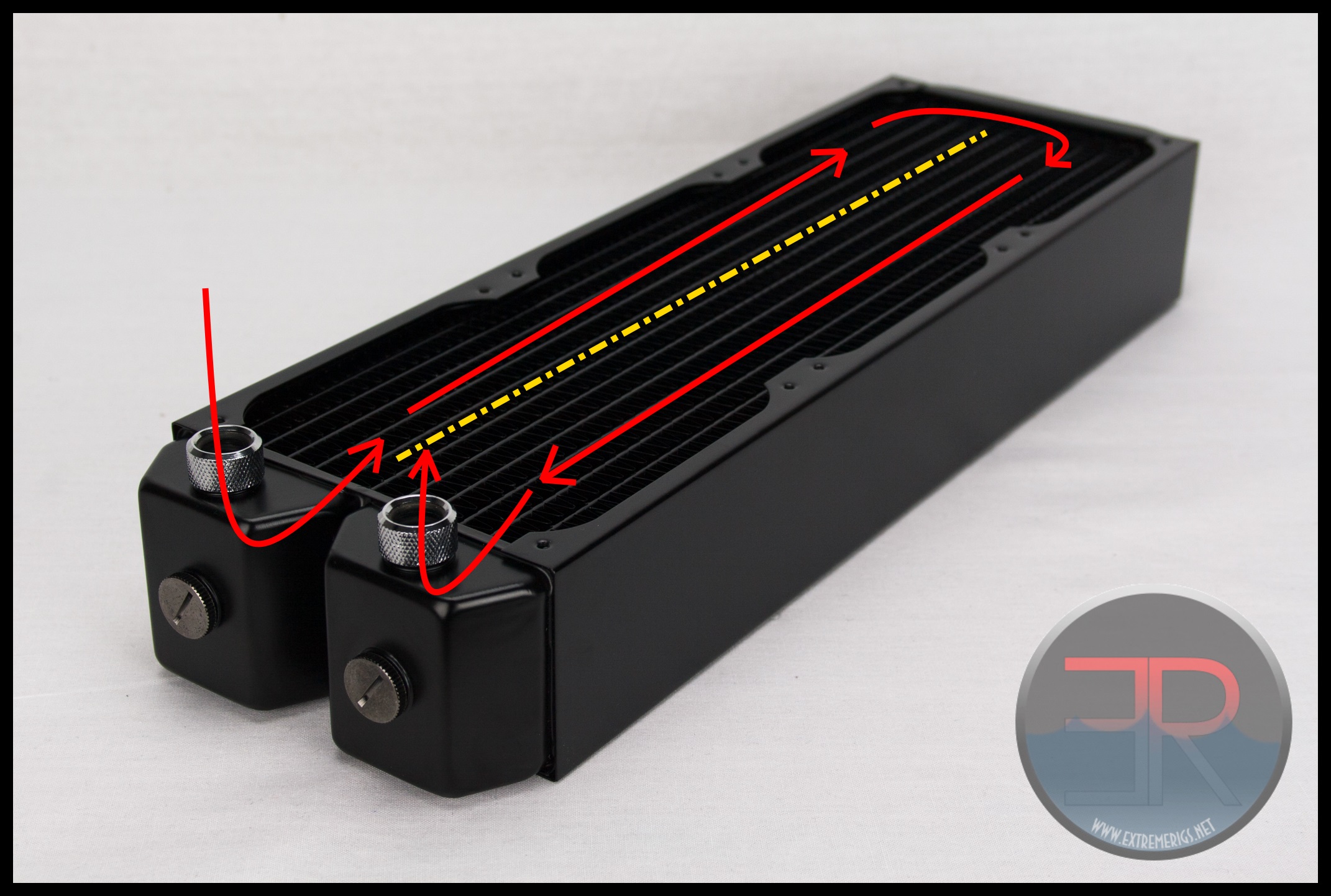
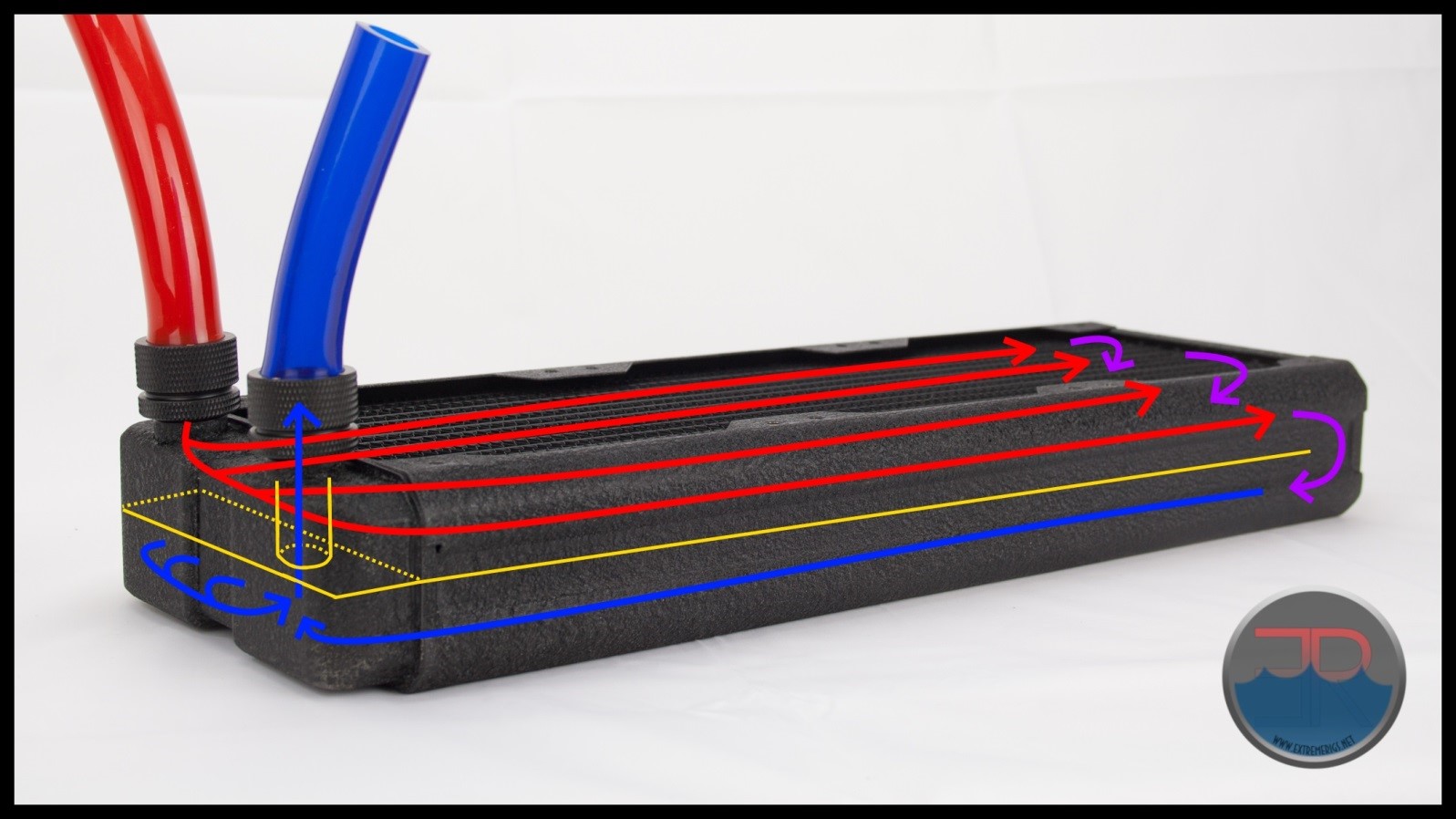
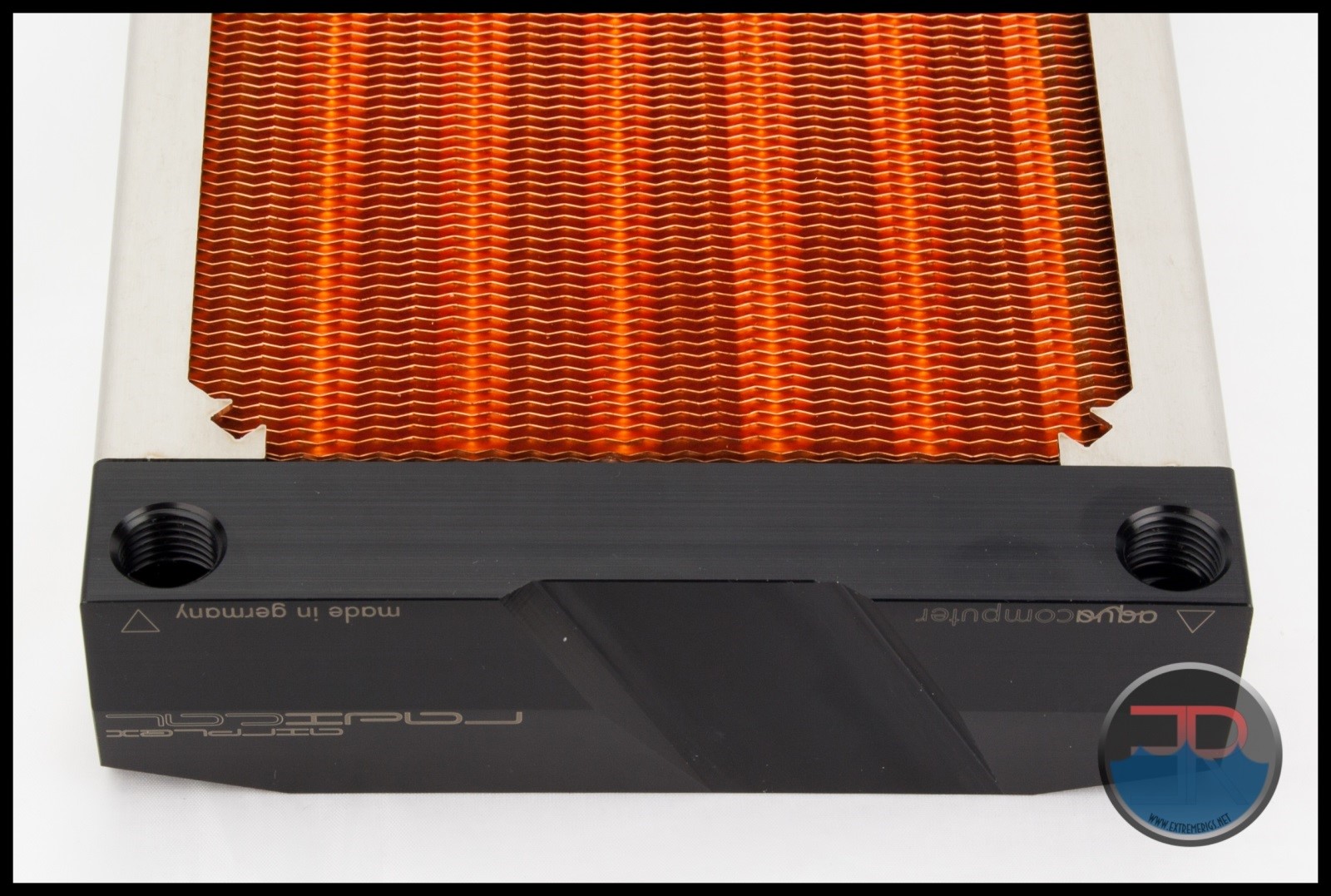
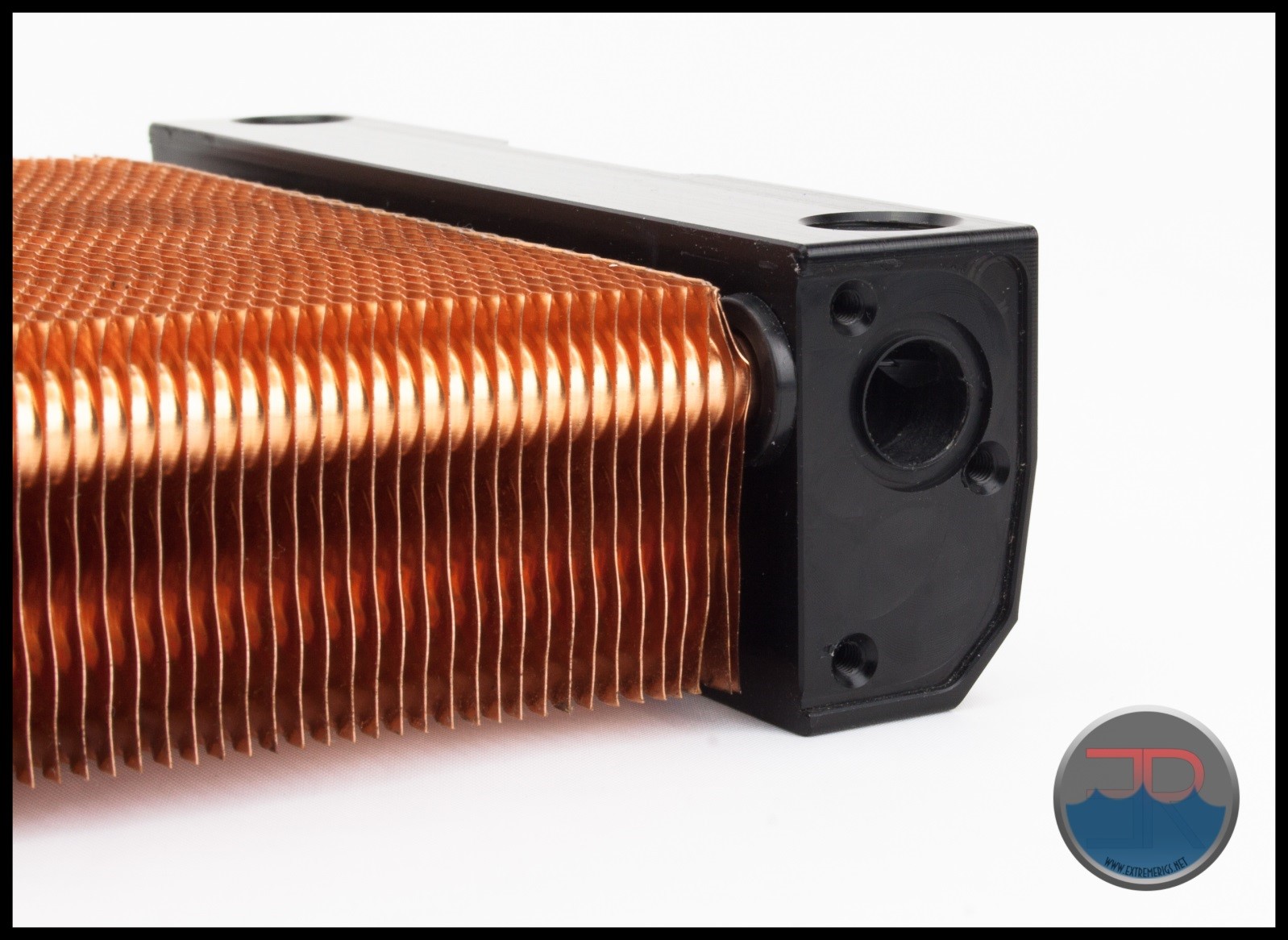
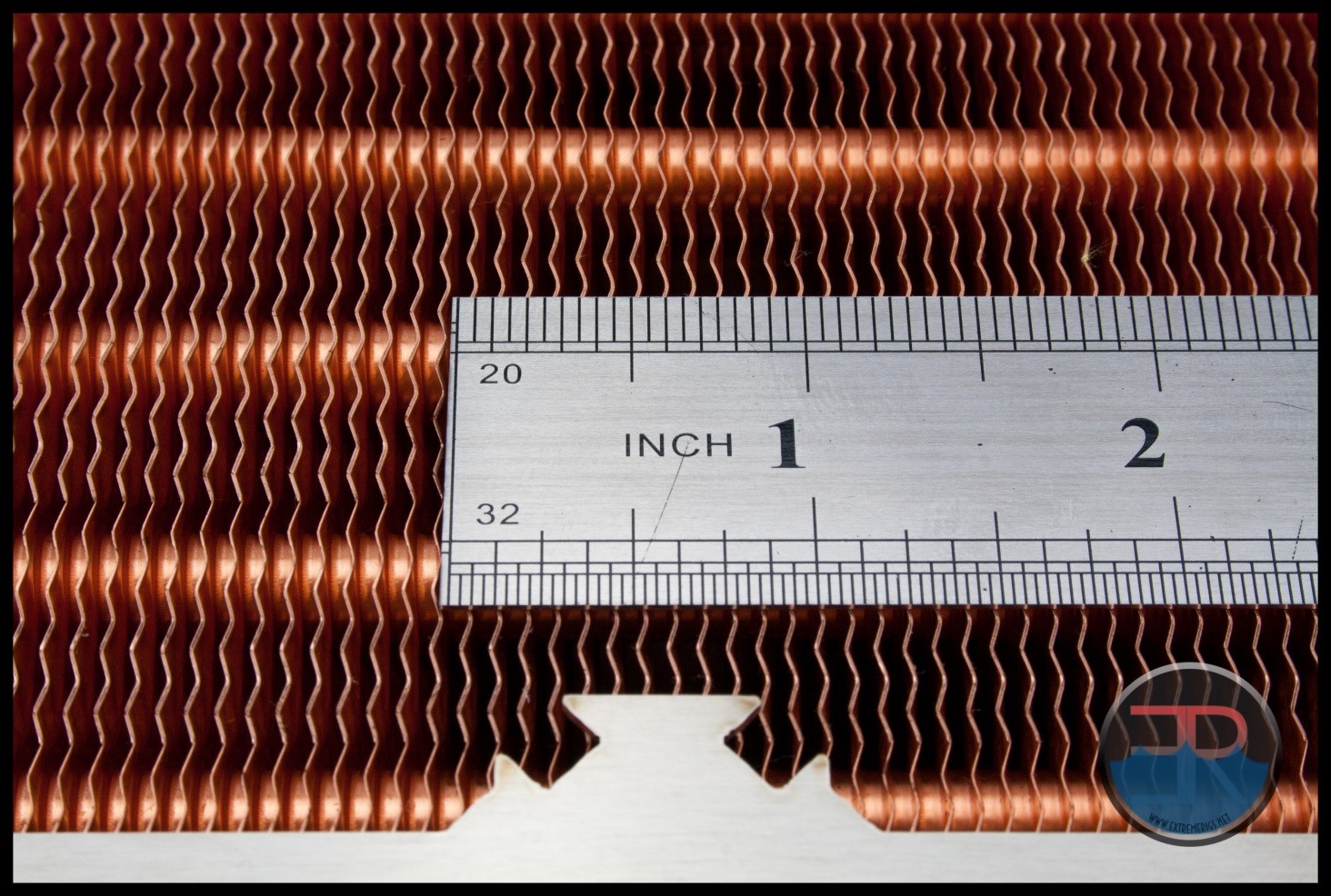
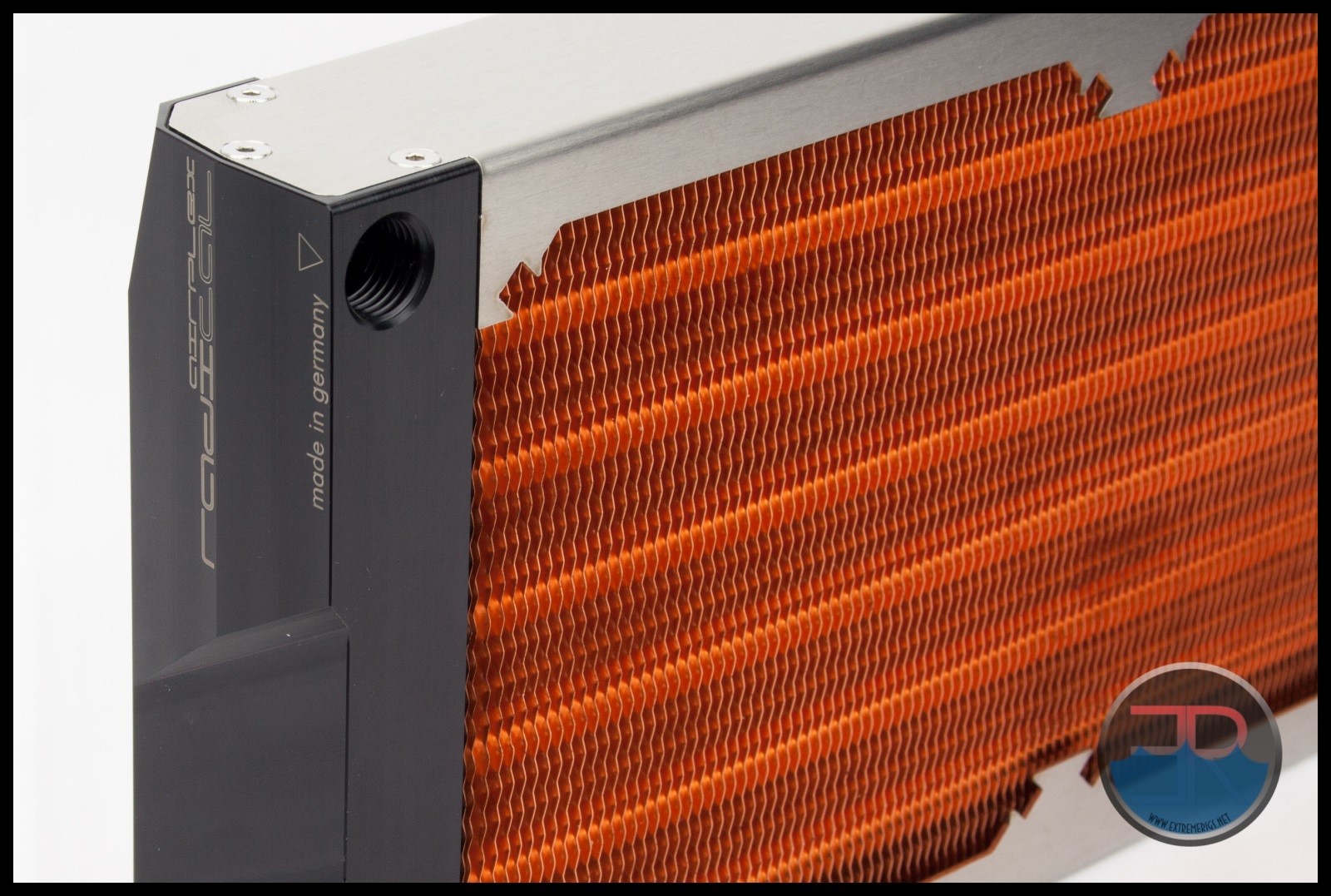
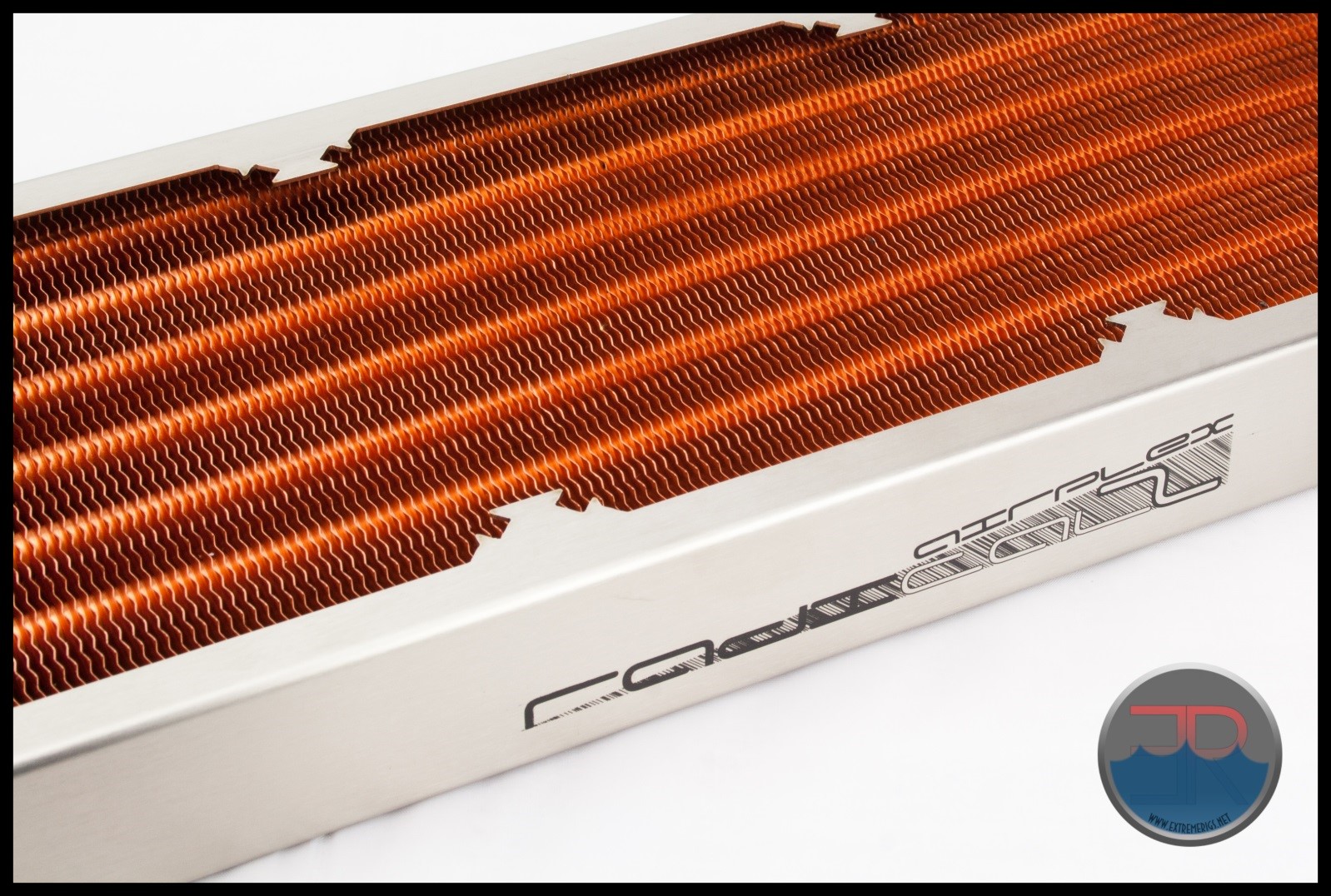
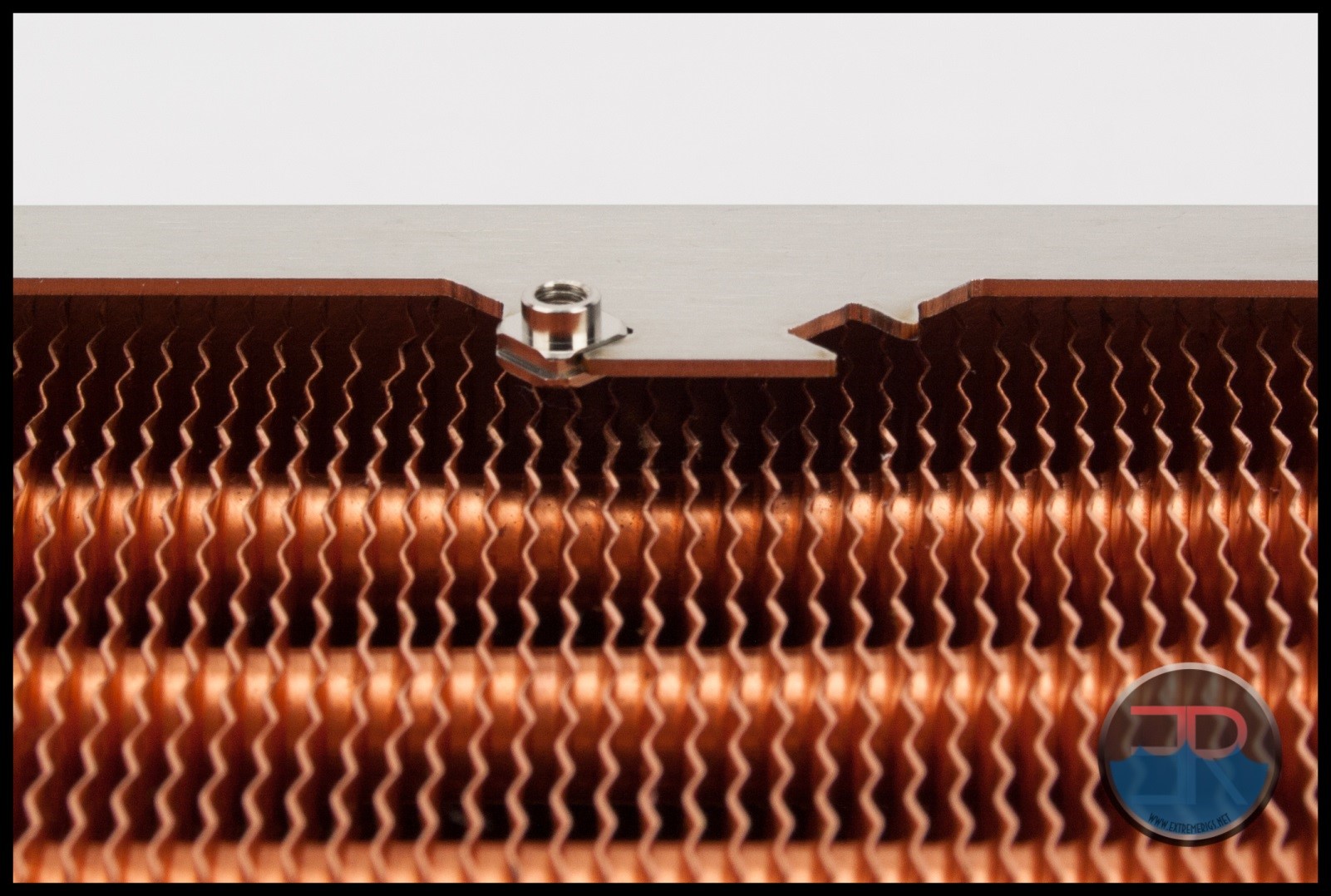

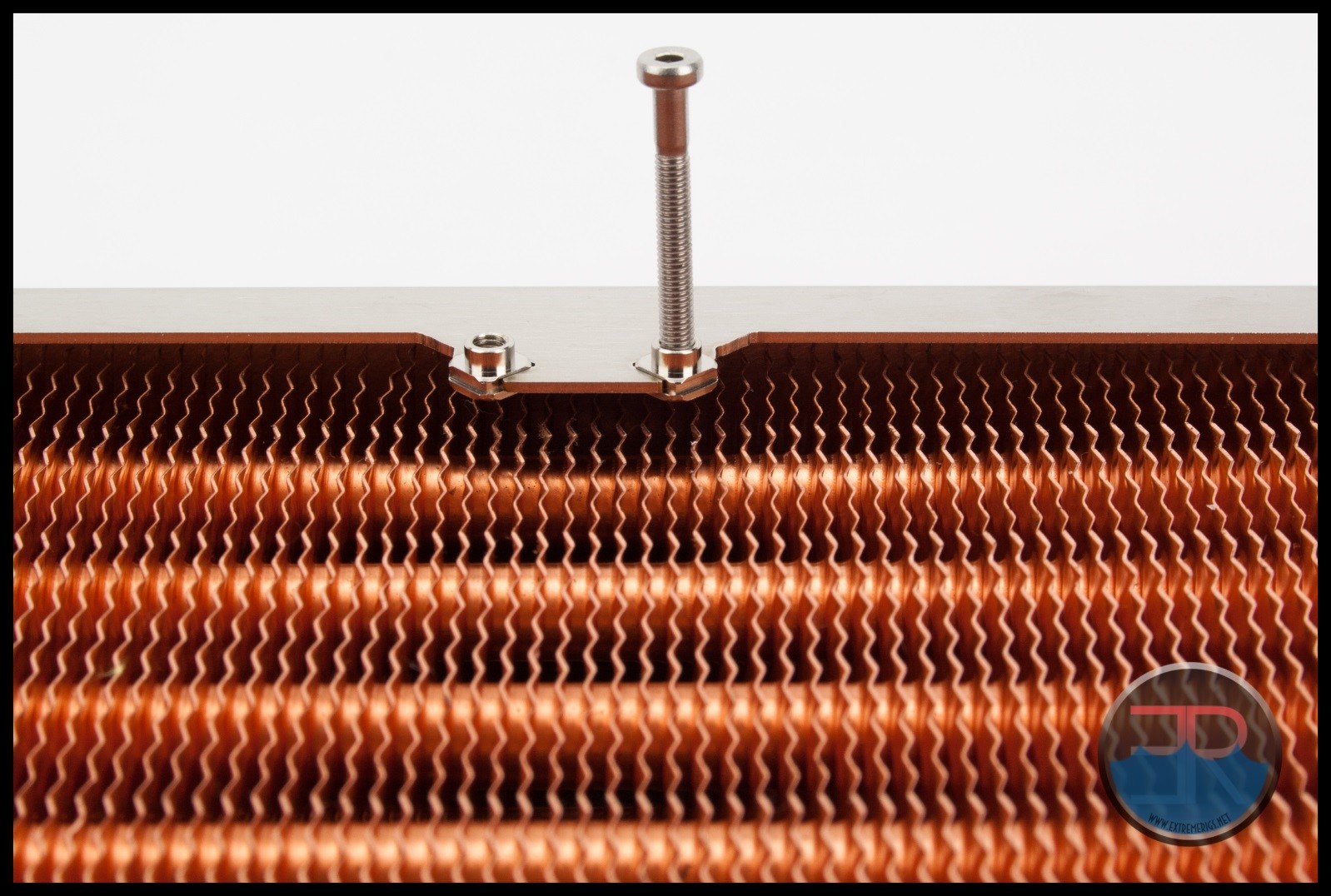
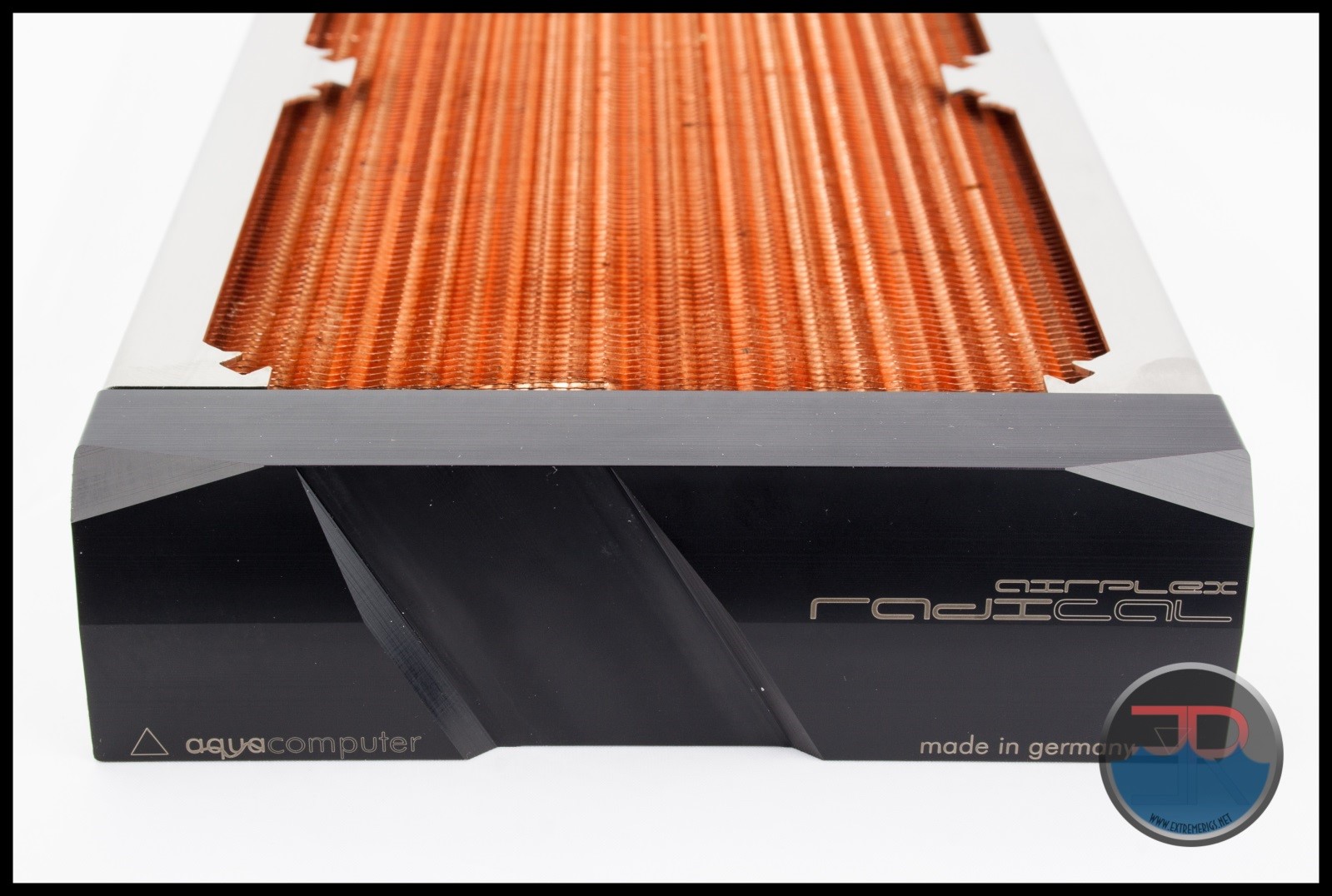



[…] 360 Radiator Alphacool ST30 360 Radiator Alphacool UT60 360 Radiator Alphacool XT45 360 Radiator AquaComputer Airplex Radical Copper 360 Radiator AquaComputer AMS 360 Radiator Coolgate CG 360 Radiator Coolgate G2 360 Radiator EK SE 360 Radiator […]
[…] just cannot dissipate the same amount of heat from the coolant as the other radiators. Quelle: Aqua Computer Airplex Radical 2 Copper Radiator Review – Page 5 of 6 – ExtremeRigs.net -> radikal schlecht Zitat von known user wenn die Masse NV anprangert, krieg ich […]
[…] […]
I have to say i fully agree with you on the mounting solution – it is utterly terrible. It took me and my brother working together to get this to fit in the top of my case (admittedly, it was a tight squeeze which doesn’t help). The fact that it doesn’t come with a full set of the fittings, means mine is supported by 4 on the top, and the other 8 holding fans on the bottom of the rad.
That aside, the cooling performance of this rad seems to be excellent for me – i have a d5 vario pump (usually running at 1000rpm), fx-8350 with EK waterblock, and this rad (3 x corsair sp120 + 2 x 200mm NZXT case fans. My temperatures are on average, below ambient. While on load, they peak at 35C. When overclocked, i have struggled to get it to go higher than 43C. Although this review suggests that other rads would lower these temps further.
Comments are closed.